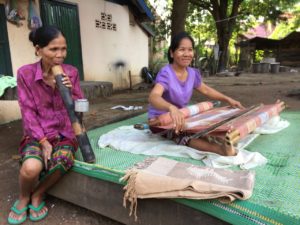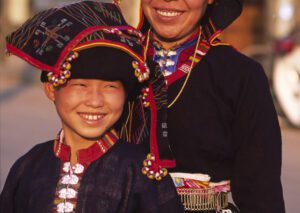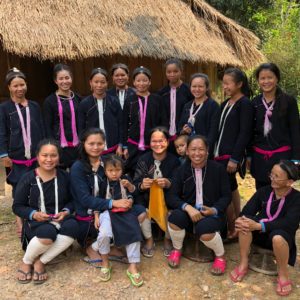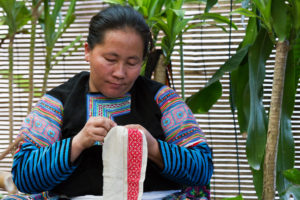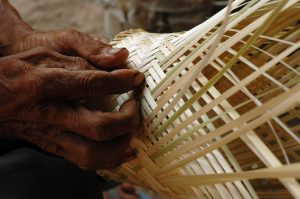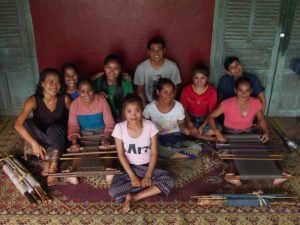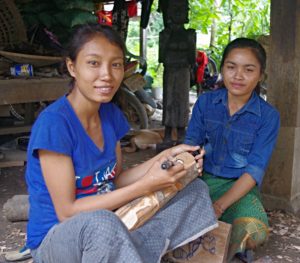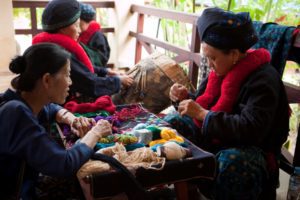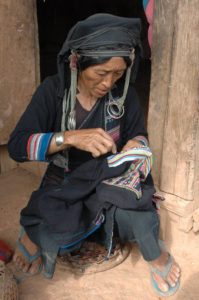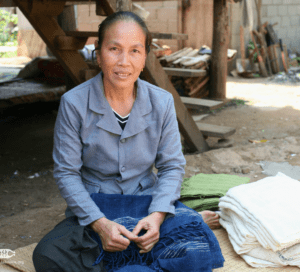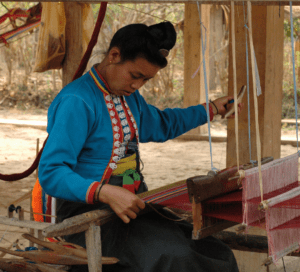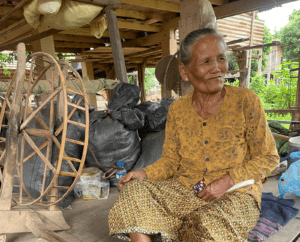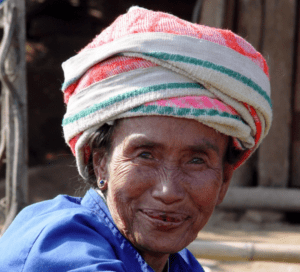No products in the cart.
ABOUT
The Oma are an ethnic group living in the far north of Laos, traditionally in highland areas, practicing swidden agriculture. They are more recent immigrants to Laos – having relocated here in the 19th century. They belong to the Sino-Tibetan ethnolinguistic family, and are often grouped with the Akha peoples, though they themselves do not necessarily identify themselves as Akha. Their languages are not mutually comprehensible, and their traditional clothing is distinct.
The Oma are well known for their graphic black and red applique work, and the silver headdresses and ornamentation women wear. Generally, the blue-black or white heavy cotton they use as a base for their clothing and handicrafts is handwoven and dyed in their community, while the red cloth or embroidery thread applied is bought from traders or the market.
Their embroidery is painstaking and detailed — it is exceedingly slow work to create the even and colourful designs that adorns their clothing and these products.
Learn more about Artisan Intellectual Property Rights through the Oma v. Italian Fashion Brand MaxMara case study.

